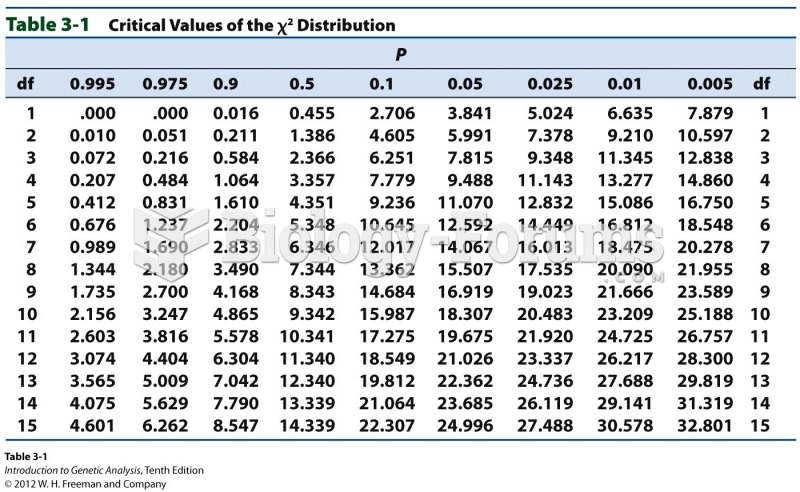|
|
|
The immune system needs 9.5 hours of sleep in total darkness to recharge completely.
Cucumber slices relieve headaches by tightening blood vessels, reducing blood flow to the area, and relieving pressure.
More than 20 million Americans cite use of marijuana within the past 30 days, according to the National Survey on Drug Use and Health (NSDUH). More than 8 million admit to using it almost every day.
In ancient Rome, many of the richer people in the population had lead-induced gout. The reason for this is unclear. Lead poisoning has also been linked to madness.
Walt Disney helped combat malaria by making an animated film in 1943 called The Winged Scourge. This short film starred the seven dwarfs and taught children that mosquitos transmit malaria, which is a very bad disease. It advocated the killing of mosquitos to stop the disease.
 The meninges. This figure illustrates the location and structure of each layer of the meninges and t
The meninges. This figure illustrates the location and structure of each layer of the meninges and t
 A scope display showing a normal Chevrolet Equinox MAF sensor at idle speed. the frequency is 2,600 ...
A scope display showing a normal Chevrolet Equinox MAF sensor at idle speed. the frequency is 2,600 ...
 The wide distribution of left hemisphere sites where cortical stimulation either blocked speech or ...
The wide distribution of left hemisphere sites where cortical stimulation either blocked speech or ...




